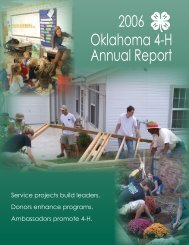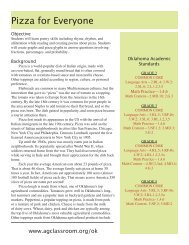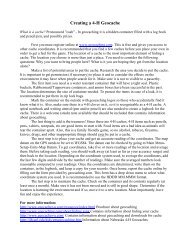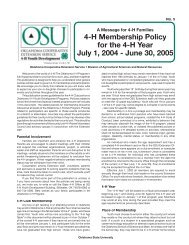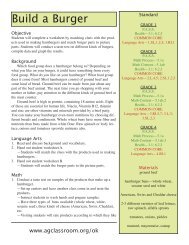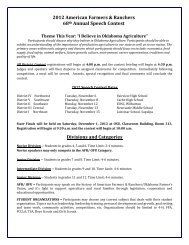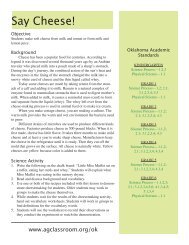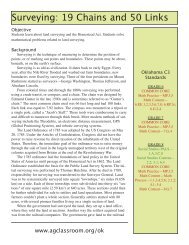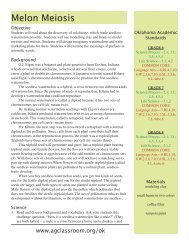You also want an ePaper? Increase the reach of your titles
YUMPU automatically turns print PDFs into web optimized ePapers that Google loves.
Glenn Orbits Earth<br />
On February 20, 1962, riding on a more powerful missile, the Atlas,<br />
astronaut John H. Glenn, Jr., became the first American to go into<br />
orbit. Glenn’s flight achieved parity with the Soviet program. Glenn<br />
orbited Earth three times for a total of 4 hours and 55 minutes in<br />
space. A sensor switch led to an early return. The sensor indicated<br />
that the Mercury capsule heat shield was loose, but the shield was<br />
later determined to be firmly in place during flight. The sensor was<br />
faulty. The last of the six Mercury flights took place on May 15, 1963,<br />
with astronaut Gordon Cooper remaining in space for nearly a day<br />
and a half.<br />
Preparing for the Moon<br />
Project Gemini followed the Mercury missions. The Gemini space<br />
capsule, riding on top of a Titan missile, contained two astronauts.<br />
During missions lasting up to 14 days, Gemini astronauts pioneered<br />
spacewalking, spacecraft rendezvous, and docking procedures.<br />
Important spacecraft systems, needed for the coming Moon flights,<br />
were evaluated. Ten Gemini missions were flown during 1965 and<br />
1966. The Titan rocket, initially created as an intercontinental ballistic<br />
missile, went on to carry the Viking spacecraft to Mars and the<br />
Voyager spacecraft to the outer solar system in the 1970s.<br />
Dr. Wernher von Braun<br />
One of the leading figures in the development of pre-war Germany’s<br />
rocket program and the development of the V2 missile, von Braun<br />
(1912-1977) became a leading proponent of America’s space program.<br />
He entered the United States after the war and became a naturalized<br />
citizen. He worked on the development of intercontinental ballistic<br />
missiles and led the development team that launched Explorer 1.<br />
Dr. von Braun was the chief architect and engineer of the Saturn V<br />
Moon rocket. His popular writings and collaboration with Disney on a<br />
“Tomorrowland” TV series did much to inspire the next generation of<br />
rocket scientists and astronauts.<br />
Gene Roddenberry<br />
Gene Roddenberry (1921-1991), a distinguished World War II bomber pilot<br />
and commercial pilot, began his writing career penning stories about flying.<br />
He began writing for television and developed a concept for a “western”<br />
series set among the stars. For three years (1966–1968), the Star Trek series<br />
explored a wide range of scientific and social issues as humans traveled<br />
across the galaxy. The series became so popular that the first space shuttle<br />
orbiter test vehicle was named Enterprise after the star ship Enterprise. The<br />
original show spawned several companion series and a string of movies.<br />
Roddenberry, a visionary, inspired a generation of space travelers.<br />
8



